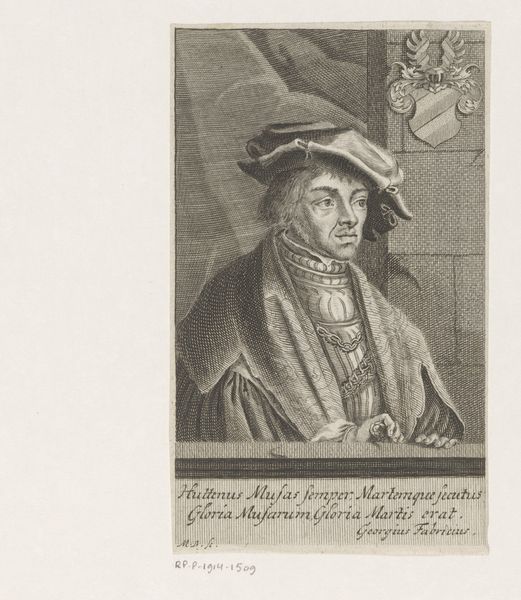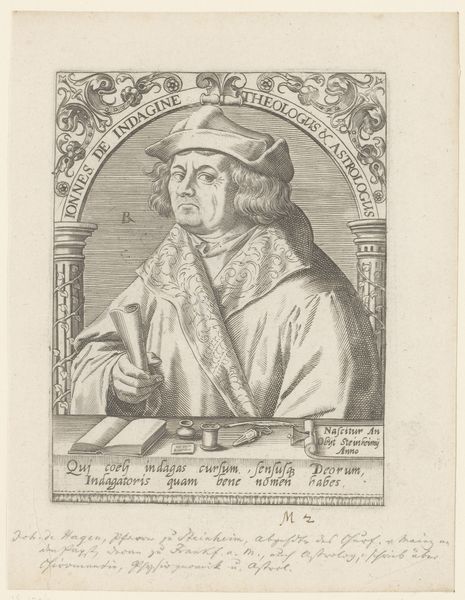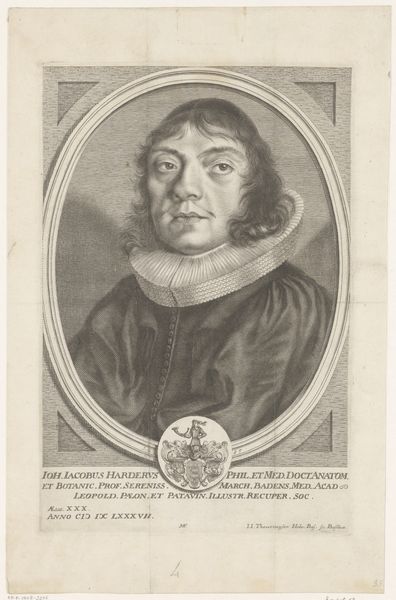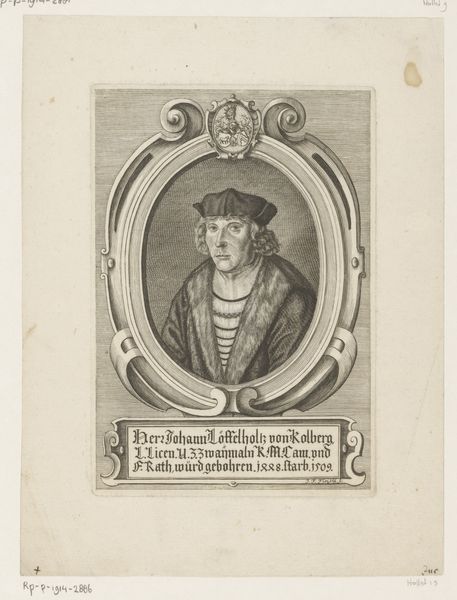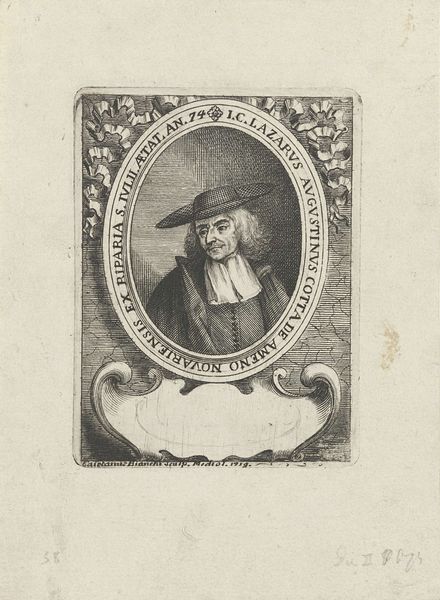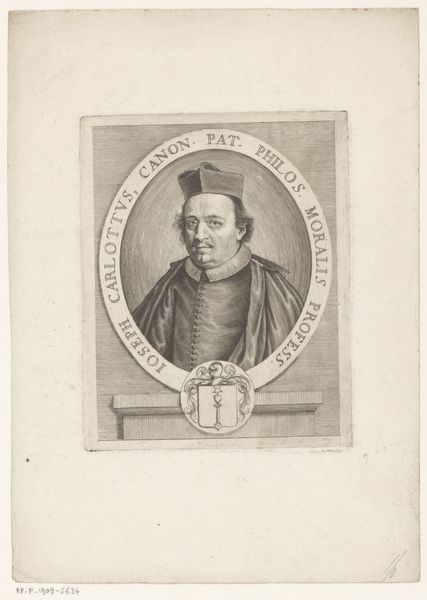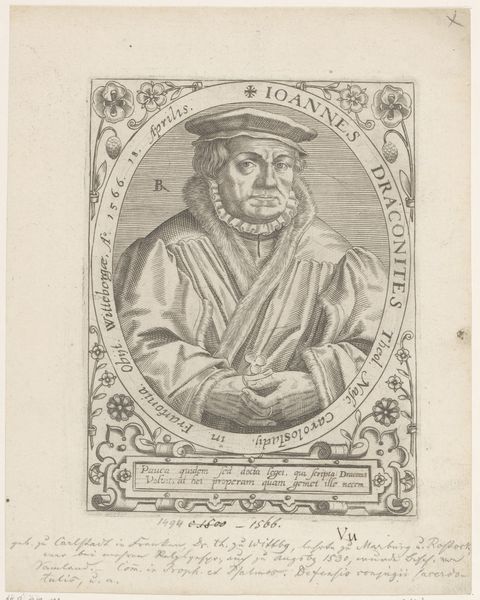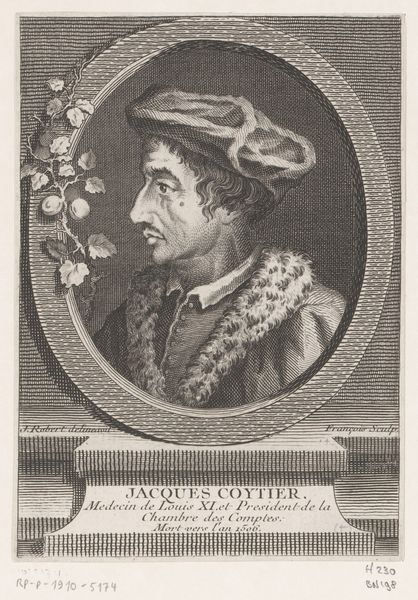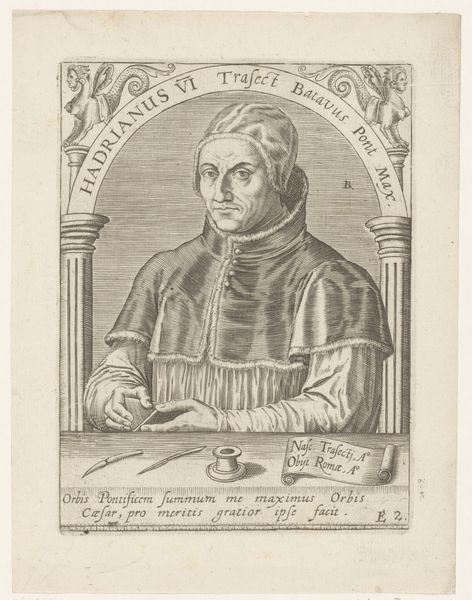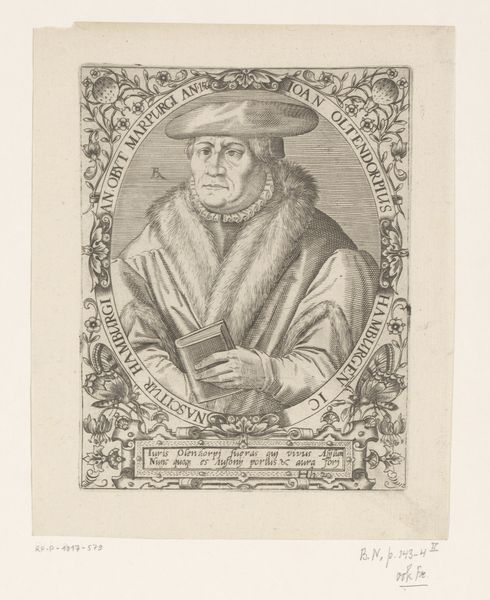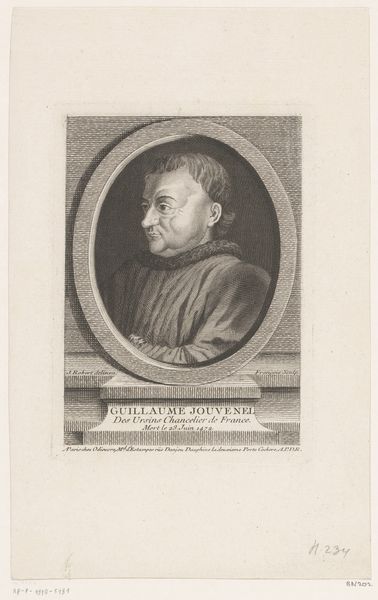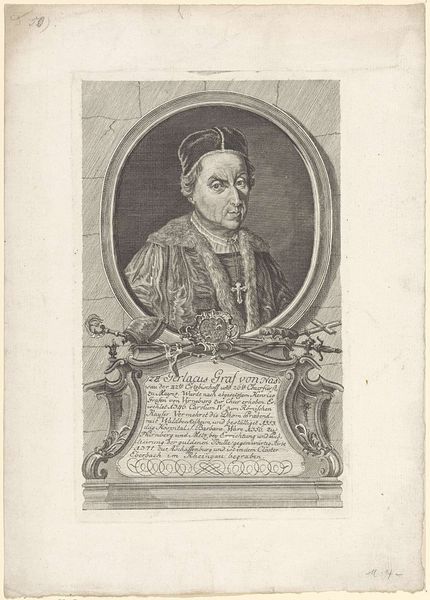
print, engraving
#
portrait
#
baroque
# print
#
engraving
#
realism
Dimensions: height 156 mm, width 98 mm
Copyright: Rijks Museum: Open Domain
Curator: Looking at this piece, I am struck by the precision of the engraved lines and how they coalesce to depict such rich textures. The layering of ink must have been quite masterful. Editor: The artwork before us, circa 1715-1765, presents us with “Portret van Ulrich von Hutten”, attributed to Johann Wilhelm Stör. It’s currently held in the collection of the Rijksmuseum. Immediately, I’m intrigued by how the image evokes a certain sense of restrained power within that frame, quite indicative of the period, I believe. Curator: I agree, it radiates power but I’m interested in the methods of production, it looks almost like a mass-produced print. Given the social context of the time, would this have been common? How would it have circulated? I bet paper quality tells part of the story here. Editor: Indeed! Printmaking served as a crucial means of disseminating political ideas and personal imagery in that era. Ulrich von Hutten was a notable figure in the Reformation, a humanist, so distributing his image would have certainly had political implications. Its realism, despite the decorative frame, suggests an intent to convey authenticity, making it persuasive propaganda. The frame also shows his coat-of-arms with that statement written below, tying Hutten with both the muses and war. Curator: Ah, and the frame itself mimics the elaborate decorations found on luxurious goods from the period. But being an engraving, it also democratizes access, disseminating status by employing techniques of mass production, interesting tension here. Editor: Absolutely. And consider the role of museums today. By exhibiting such a print, are we recontextualizing von Hutten within our contemporary values? What narratives are museums implicitly supporting when they choose to display a piece like this? Curator: It speaks volumes about art's function in conveying societal values and influencing the public's views of history. The materials speak but the selection criteria and curatorial narrative truly make the artwork complete. Editor: Precisely, the conversation between its historical context and current presentation adds layers of meaning, inviting viewers to consider how art reflects and shapes the currents of political and social thought across centuries. It definitely warrants further study!
Comments
No comments
Be the first to comment and join the conversation on the ultimate creative platform.
